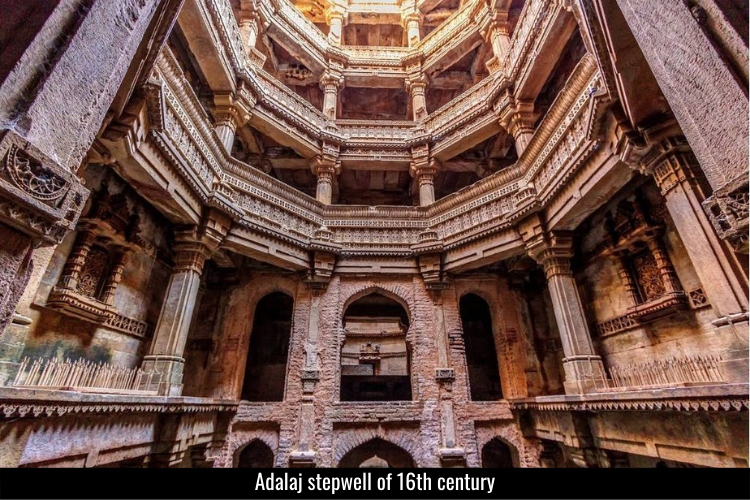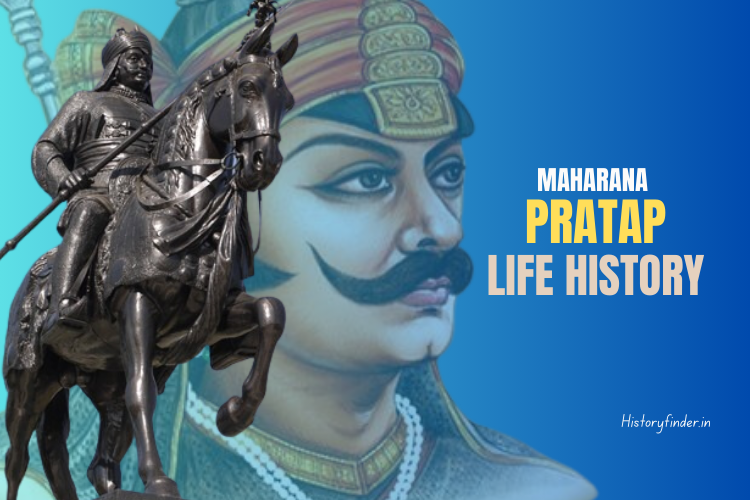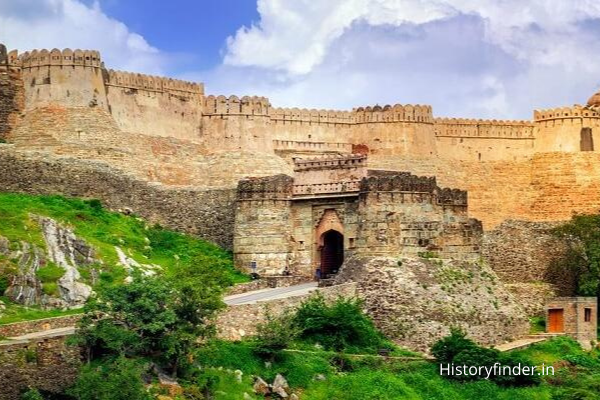Bihar, the state in eastern India, is notable as rich historical and cultural heritage of the nation. The territory had remained a political stronghold for centuries. Bihar also had been a strong contributor in the spiritual history of India, as the birthplace of Buddhism and the place of revival of Jainism. Ancient Buddhist stupas, monasteries and Hindu temples represent Bihar’s cultural significance. In addition, the traces of ancient universities reflect the massive progress of Bihar during ancient ages.
The name Bihar arrived from the Sanskrit word ‘Vihara’ which means adobe. Bihar during ancient and medieval period, has been a center of Buddhist Viharas or monasteries. That was how, the land of monasteries, got the name Bihar. In 1912 CE, Bihar got the status of an independent state under British India, after separation from undivided Bengal.
Bihar is notable of sweet languages like Bhojpuri and Maithili. Although Hindi and Urdu are the official languages in Bihar, dialects like Magadhi, Angika, and Bajjika are also spoken. The region has also introduced several delicate Bihari cuisines in India’s cultural food craze. Bihari Music, especially the folks, hold an immense cultural significance, reflecting the lives, traditions and emotions of Bihari people.
Brief History of Bihar
Bihar’s history is a classic blend of its social, cutural, political and educational journey. Archaelogical excavations, experts’ researches and findings alongside the cutural and structural heritages gave Bihar a splendid history.
Bihar in Pre-Historic Age
Earliest human existence of Bihar belong to the old-stone age. Kharagpur hills area holds several traces of Paleolithic civilization. The Mesolithic site of Munger also belong to the earliest human population of Bihar. But the most intersting traces of stone-age humans found in pre-historic rock paintings of Kaimur, Nawada and Jamui hills.
Another but relatively newer civilization was found just at the outskirts of Vaishali. The bricks unearthed, had a very close relevance with mature Harappan era. Also, a round seal discovered from the region was very familiar to the Indus Valley civilization. So, scholars like Iravatham Mahadevan belive that a parallel civilization to the Indus Valley Civilization surely existed around 1100 BCE in Bihar.
List of Top 9 Pre-Historic Sites in Bihar
Bihar’s rich culture is traceable from several thousand years ago. The region is highly populated with traces of pre-historic human settlements. Here is the list of Bihar’s most prominent pre-historic sites:
- Chirand (Saran)- A significant Neolithic site and is where the first Neolithic culture in the Ganga valley was discovered.
- Chechar (Vaishali)- Signifies early Neolithic human settements in Vaishali district.
- Senuwar (Rohtas)- Marks Neolithic settlement in Rohtas district, showcasing early human settlements along the Ganges.
- Maner (Patna)- A Neolithic site in Patna, further demonstrating the prevalence of early settled life along the river valley.
- Taradih (Bodh Gaya)- A Neolithic site in Bodh Gaya, indicating early human settlements in this region.
- Barudih (Singhbhum)- A Neolithic site in Singhbhum district, highlighting the widespread nature of early settlements in Bihar.
- Lomas Rishi Cave (Rajgir)- A cave near Rajgir that showcases early rock-cut architecture and is considered a significant site.
- Kharagpur Hills- A Paleolithic occupation in Bihar, with multiple sites indicating early human activity in the region.
- Rohtasgarh- This fort is known for its megalithic tombs and stone pillars (Menhir). discovered in the Kaimur hills, offering insights into burial practices of the time.
Ancient Kingdoms of Bihar
The present territory of Bihar combines three major ancient kingdoms, rather Mahajanapadas – Anga, Videha and Magadha.
Kingdom of Anga
Anga kingdom existed during early Vedic ages (1500-1000 BCE), featuring a remarkable phase in ancient history of Bihar. Champa was the capital of the Anga, now in Bhagalpur, a district in eastern Bihar region. The territory of Anga stretched up to Champa river in the west and Rajmahal hills in the east. The kingdom earlier included the kingdom of Magadha as well, perhaps stretched southwards up to the Bay of Bengal. According to the Hindu epic Mahabharata, the Anga kingdom belonged to the Kuru dynasty of Hastinapur earlier, while prince Duryodhana donated the land to Karna. However, with strong emergence of Videha and Magadha kingdoms later, the Anga kingdom lost its prominence.
Kingdom of Videha
The kingdom of Videha, the dynasty of Vaidehas, gained prominence during the late Vedic age. Mithila was the capital of Videha kingdom, while the rulers of Videha kingdom were more popular as the Janakas. Videha kingdom emerged bordering the Kosala kingdom in the west, Kausiki river in the east and the Ganges to the south. Later, the Vaidehas formed the Vajjika league, allying with the Lichhavika tribe.
Kingdom of Magadha
The rise of Magadha kingdom was the most proud phase in the history of Bihar. The initial control of Magadha, perhaps, belonged to the Kuru-Panchalas and the Angas. However, Hariyanka dynasty established first independent Magadha kingdom since 543 BCE. Rajagriha, now Rajgir, was the initial capital of Magadha. King Ajatashatru, founded Pataliputra (now Patna) in 490 BCE, and shifted his capital there. The supremacy of Magadha continued until 8th century CE, notable as the prime political heritage of Bihar.
List of Dynasties Ruled the Kingdom of Magadha
History of Magadha is incredibly rich with more than 1200 years of span. About 10 different dynasties have ruled from Magadha until 8th century CE. Here is the full list of all the dynasty rules at the kingdom of Magadha:
- Hariyanka dynasty (543 BCE-413 BCE)
- Shaishunaga dynasty (413 BCE–345 BCE)
- Nanda dynasty (c. 345 BCE–c. 322 BCE)
- Maurya Empire (322 BCE – 185 BCE)
- Shunga Empire (185 BCE–73 BCE)
- Kanva dynasty (73 BCE–28 BCE)
- Mitra dynasty (Kosambi) ( 1st cent. BCE – 2nd cent. CE)
- Mahameghavahana dynasty (2nd-3rd cent. CE)
- Gupta Empire (c. 240–c. 579)
- Later Guptas (c. 6th century CE–c. 8th century CE)
Mauryan Empire brought almost a large territory under the control of Magadha. Magadha prospered economically with frourishing agriculture, metal mines and trades during Mauryan period.
The Gupta period, also known as the ‘Golden Age’ of India, was the most remarkable phase in the history of Bihar. The region flourished in every aspects including art, architecture, culture, commerce, economy, science, mathematics, astronomy and literature.
Medieval History of Bihar
Between 8th and 12th century, Bihar went under control of the Pala dynasty. The Pala kings, despite originated from Bengal, supported education and Buddhism in Bihar. Sena dynasty replaced the Palas during 12th century and promoted Hinduism and Vaishnavism.
By the late 12th century, Bihar was invaded by Delhi Sultanate, which began Muslim migration in Bihar. After the first battle of Panipat, Bihar came under Mughal Empire. But soon, Sher Shah Suri, defeated Mughal emperor Humayun to snatch Bihar from the Mughals. Badshah Akbar reclaimed Bihar along with other Mughal in the second battle of Panipat. Bihar became the part of Mughal subah of Bengal. The region progressed raipdly as commercial center of indigo, saltpeter and textiles.
Top Medieval Age Heritage Architectures in Bihar
Bihar’s medieval age history is majorly reflected by its heritage architectures still standing strong. Some of them though have partially destroyed but their historical significance are still intact. Here are the top medieval period heritage architectures in Bihar with great historical importance:
- Nalanda University ruins – Built during Gupta period. Destroyed by Bakhtiyar Khilji in 1193 CE, during his invasion.
- Vikramshila University – Built during Pala period. A famous ancient Buddhist learning center.
- Bihar Sharif – Former capital of local Muslim rulers of Bihar. Famous for legendari Sufi shrines.
- Sasaram – Tomb of Sher Shah Suri, famous for splendid Indo-Afghan architectural style.
- Maner Sharif – Largest Muslim pilgrimage in Bihar, the Dargah of Makhdoom Yahya Maneri.

Bihar During British Period
The Mughal defeat at the Battle of Buxar (1764 CE) gained East India Company the Diwani rights over Bihar, including Bengal and Orissa. Bihar remained the part of British Bengal Presidency until 1912 CE. Patna was turned into an important center of saltpeter, opium and indigo. Lord Cornwallis introduced Zamindari system in Bihar. Burdening the peasants with unaffordably high taxes led to landlessness, rural distress and famines.
Bihar played a key role in the Indian rebellion of 1857, the first War for Independence. Veer Kunwar Singh, a 70 year-old Zamindar of Jagdishpur, led a strong rebellion, now recalled among the national heroes from Bihar. The region also witnessed several peasant protests against the European Indigo planters. Champaran Satyagraha (1917 CE) was the first Satyagraha of Mahatma Gandhi ji, to help the oppressed indigo farmers. The likes of Rajendra Prasad, Anugrah Narayan Sinha, and Mazharul Haque has active contribution in Champaran Satyagrah.
On 22 March 1912, Bihar got the status of separate British province, and Patna became the capital. Bihar remained an important region for anti-British movements. Underground revolutionary activists remained active until the Indepence of India.
Important National Leaders Produced by Bihar
Bihar had produced several national leaders, who had major contributions during India’s freedom struggle. Here is the list of top three national leaders from Bihar:
- Dr. Rajendra Prasad – India’s first President.
- Sri Krishna Sinha (Sinha Ji) – First Chief Minister of Bihar.
- Anugrah Narayan Sinha – Key leader in Quit India Movement.
Spiritual History of Bihar
Bihar is renowned as the spiritual heritage of India for many reasons. According to the Vedic texts, Mithila was the home of sage-king Janaka. The Ramayana connects Mithila of Bihar to Devi Sita, daughter of King Janaka and consort of Sri Rama.
Bodh Gaya connects Bihar with Gautama Buddha, where he attained enlightenment and became Lord Buddha (528 or 445 BCE). The Bodhi tree of Bodh Gaya still remains the most important Buddhist pilgrimage site in India and the world. Rajgir and Vaishali were the earliest important Buddhist centers in Bihar. Nalanda and Vikramashila turned out as two world famous Buddhist monasteries and universities. These two Buddhist universities made Bihar the most important center of education until 12th century CE. Theravāda and Mahāyāna Buddhism spread across Asia from holy place of Bihar.

Vaishali links Jainism to Bihar as the birthplace of Lord Mahavira, the 24th and last Tirthankar of Jainism. Lord Mahavira spent much of his at Rajgir and Pawapuri and attained Moksha. Jal Mandir of Pawapuri remains a major Jain pilgrimage site in India, commemorating the final liberation of Lord Mahavira.
Magadha and Mithila remained holiest place in Bihar for Yogis and sages. With Arrival of Islam, Bihar became a large center of Sufism. Maner Sharif, near Patna, has a major association with the Sufi saint Hazrat Makhdoom Yahya Maneri. Guru Govind Singh, the tenth Sikh Guru, was born at the Patna Sahib Gurudwara near Patna in 1666 CE. Takht Sri Patna Sahib in Bihar is notable as one of the five holiest seats of Sikhism.
The Top 10 Spiritual Heritage Sites in Bihar
The region of Bihar is extremely rich spiritual heritage sites, spanning for several millenias. These 10 spiritual heritage sites of Bihar are the most important and renowned ones:
- Mahabodhi Temple, Bodh Gaya – A UNESCO World Heritage site. It is the most famous Biddhist pilgrimage where Siddhartha Gautama attained enlightenment and became Lord Buddha.
- Vishnupad Temple, Gaya – The ancient temple is dedicated to Lord Vishnu. It is one of the major Hindu pilgrimage site, famous for Pind-daan rituals for ancestors.
- Nalanda University, Nalanda – One of the oldest universities in the world. A learning center of Buddhism and spirituality.
- Vishwa Shanti Stupa, Rajgir – A famous Buddhist stupa and monastery in Rajgir, Bihar.
- Jal Mandir, Pawapuri – Most famous Jain pilgrimage site in Bihar. The place where Lord Mahavira, the 24th Tirthankara, attained Nirvana.
- Barabar Caves, Jehanabad – One of the oldest surviving rock-cut caves in Bihar and India, dating back the Mauryan era.
- Vaishali Ashoka Pillar, Buddhist stupa and Relic Stupa of Licchavi, Vaishali – An important archaeological site in Vaishali region, linked to both Buddhism and Jainism.
- Kesariya Stupa, Tajpur Deur – One of largest Buddhist stupas in the world, associated with the last sermon of Lord Buddha.
- Takht Sri Patna Sahib, Patna – One of the five takhts (holy seats) of Sikhism, built in honor of the birth of Guru Gobind Singh in Patna.
- Maner Sharif Badi Dargah, Patna – One of largest Muslim pilgriamge sites in Bihar, associated with famous Sufi saint Hazrat Makhdoom Shaykh Sharfuddin Ahmed Yahya Maneri.
History of Language Transition in Bihar
Ancient Bihar had been the birthplace of multiple languages and dialects, reflecting an enriching history. This further led to birth of several Bihari dialects. Vedic Sanskrit had been the only language noticeable until the late Vedic ages (1500-600 BCE). Prakrit had gradually replaced Sanskrit during the period of Mahajanapadas (600-400 BCE). Magadhi Prakrit, a dialect of original Prakrit, had been the official spoken language of Magadha. Ancient Buddhist and Jain scriptures, mostly developed in Bihar, was mostly written in Magadhi Prakrit. Ashokan scriptures (260 BCE) reflect a lot of uses of Prakrit.
The Pali language slowly emerged from Prakrit during late 3rd century BCE. The emergence of Pali has links with the oral teachings of Buddha and spread of Buddhism. Late Ashokan inscriptions, Buddhist texts had a lot of uses of early form of Pali. On the other side, Maithili language emerged from the eastern Prakrit.
During medieval age, Magadhi and Bhojpuri developed as spoken dialects of Magadhi Prakrit. Maithili language also matured into a literary and official language. As the Islamic rule began in Bihar, Persian also became an official language in Bihar. Urdu was also introduced as an official language during 12th century. Hindi language
By the 18th century, English was introduced by the British. Indigenous languages like Maithili, Magahi, and Bhojpuri remained strong in oral traditions. But they lacked official status. In 1881, Bihar adopted Hindi as an official language, replacing Urdu.
History of Cultural Transformation in Bihar
Bihar has got a long, fantastic history of cultural transformation, spanning over 3,000 years. Vedic age culture was relatively egalitarian, with minimal class distinction. Vedic rituals included Yajnas and prayers. From the 6th century BCE, Bihar witnessed a cultural shift from ritualism to ethical and philosophical questioning. Class discrimination also increased across the society. With emergence of Buddhism, Monastic culture evolved around Nalanda and Vikramashila and spread across Asia. Art, education and architecture flurished in Bihar with strong Buddhist influence.
Bihar’s art and architecture flourished further under Gupta patronage. By the 12th century, Sena dynasty revived Hinduism, which marked another massive cultural transformation. Hindu temple art and architectures emerged in Bihar. Muslim invasion during late 12th century further introduced Sufi culture. As a result, Indo-Islamic art and architecture evolved in the region. Mingling of folk Hinduism with Sufi mysticism brought a rich cultural and religious synthesis.
Modern English education during British period gave birth to Indian nationalism. Folk and regional cultures resisted colonial hegemony. Bihar emerged as a hotbed for social reform and nationalist movements. People’s participation in politics, arts, and education also increased significantly. Hindi, Urdu, and Bhojpuri poetry and literature flourished in Bihar.
Final Takeaways
The history of Bihar is a classic blend of the region’s long political, cultural and spiritual journey. Magadha was the heartland of ancient Indian empires like Maurya and Gupta. Bodh Gaya of Bihar stands the birth place of Buddhism that spread all across Asia. India’s earliest universities, Nalanda and Vikramashila, which accomodated students across the world, belong to the region.
The ancient Indian languages like Prakrit and Pali was born in Bihar. The state is also famous for sweet Bhojpuri, Maithili and Magadhi languages around the world. Finally, Bihar had played major role in Indian freedom movements, producing several national leaders. Dr. Rajendra Prasad, the first President of India, belonged to the state of historical heritage.




